8 Things Purina Taught Me About Pet Care
Twice now, I have been invited to attend the Purina (Nestlé-Purina) Better with Pets Summit in New York City.
The first time I received an invitation, I almost didn’t accept.
I admit that I had become caught up in all the “corporate” bashing of Purina on social media.
Inherently, a large company is more visible to the public so the fact that they are out to make money, and the emphasis on “the bottom line”, is more in your face.
There have also been a lot of “freak out” moments about the quality of Purina pet food on social media.
However, I am someone who likes to inform myself, hear from both sides, and decide how I feel based on that.
Also, the summit tagline really grabbed my attention – Exploring the Best Ideas for Bringing Pets and People Together.
The human-animal bond is something I believe in 100%. I know my life changed drastically for the better when I became a dog owner.
So, I decided to accept the offer and attend.
UPDATED: March 34, 2023
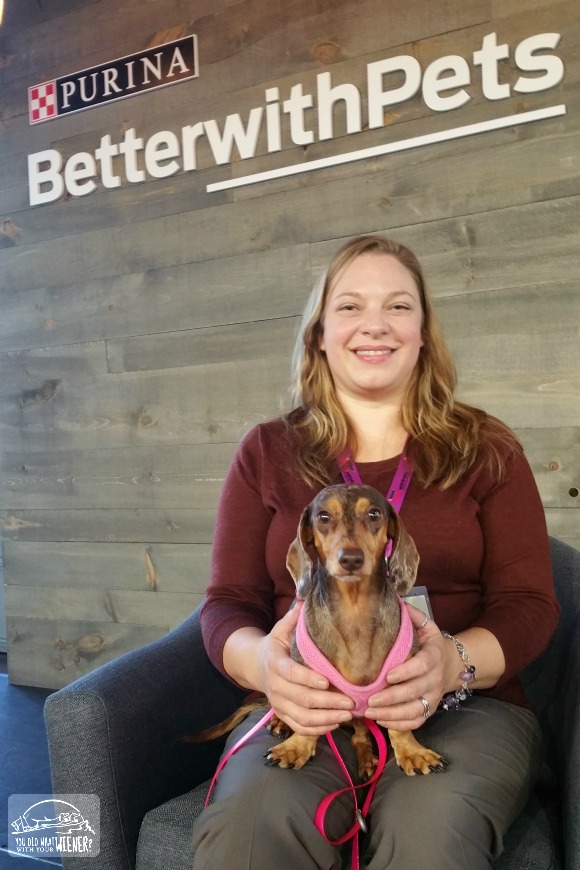


It turns out, Purina had a lot of things to teach me about improving my dog’s life.
I also learned a lot about how big corporations like this lift up the “little guy” (smaller pet companies) through their efforts and research.
Below is some of what I learned at the Purina Better with Pets Summit.
Things I Learned at the Purina Better with Pets Summit
1) A little bit of stress is good
A panel including a Professor of Psychology and Dr. Marty Becker, D.V.M., talked about the different types of stress and how it affects pets.
Researchers have found that a little bit of “eustress” (positive, mild stress) is good for dogs so they learn to cope with bigger stressors later in life.
The concept of eustress was very interesting to me.
I’ve always intuitively felt that a little bit of stress is good for pets and people because that is how we learn to deal with things and grow but didn’t know that kind of stress had a formal name.
2) Exercise stresses the body in a good way
I learned that exercise is one way to deliver this natural, positive eustress for dogs.
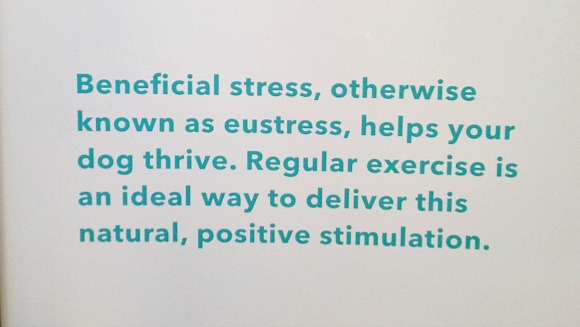


That made me think of the (few) people who criticize me for taking Chester and Gretel on long hikes.
I am fully aware that they do have limits, and I keep a keen eye out for signs they’ve had “too much” exercise, but I believe pushing them a little bit sometimes is good for them.
I’ve seen them thrive both physically and mentally since they started hiking.
3) Stress in owners and their pets are linked
In the expo area, there was a fun little heart rate experiment where they strapped a heart rate monitor to me and held one around Gretel’s chest to measure our heart rates during the same experience.
The graph was interesting because our heart rates kind of mirrored each other.
I began to stress the longer the heart rate monitor was on her and my heart rate began to climb.
As my heart rate increase, so did hers. And the only difference in our surroundings was my feelings.
4) We can make your home more comfortable for our pets through thoughtful design
More pet owners are making choices when building/remodeling homes, like lighting, flooring, etc, that are less stressful for their pets.
Choices like softer colors for cats because they see colors brighter than people do, and non-fluorescent lighting because animals can hear buzzing noises coming out of them, make a difference in our pet’s lives.
I know most of us buy pre-built homes but this idea got me thinking about the changes I could make to our current home or what I would choose if I was to build my own home.
5) Glucose metabolism is linked to canine dementia
Purina discovered that around age 7 a dog’s glucose metabolism in the brain starts to change.
This change can manifest in “senior moments” and dementia symptoms.
If you can improve a pet’s glucose metabolism, you can help slow those changes.
Figuring out how to realize this future led them to work with neuroscientists, both inside and outside of Purina, to develop the Purina bright mind senior 7+ dog food.
Whether you choose to feed this food to your senior pet or not, their scientific discovery will affect product development and choices all across the pet industry.
6) The ingredients don’t tell the whole story about a dog food
Although the ingredients list on a dog food package is helpful, it’s not necessarily an indicator of quality of food.
For example, two companies can list “animal byproduct” on the label.
Since the human and pet food system is intertwined, what “byproduct” means is “parts of the animal that humans don’t want to eat”.
What “byproduct” consists of can differ widely in quality.
It could mean “chicken lips and assholes” (a silly phrase I’ve heard often meaning “of low quality” – NOT Purina’s words) or it could mean nutritious organ meats.
Purina always uses the latter in their foods because they want every ingredient to have a purpose.
7) Food is medicine
The saying “you are what you eat” is just as true for dogs as it is for people.
The trend in both human and animal medicine is to treat ailments with diet first instead of medicine.
If a pet is eating high-quality food with all of the proper nutrients, they may have no need for medication.
8) Sustainable proteins can be more nutritious as traditional ones
At the Summit, I learned that a huge trend in pet food is a move towards more sustainable protein sources for food.
When asked, “what do you think the future of pet food innovation will look like?” one of the Purina panelists said we might start seeing insects, like crickets, as protein sources in pet food.
It sounds gross but crickets are a delicacy in some cultures and cricket protein is even more nutritious than beef.
Crickets have a protein content of about two to three times higher than beef, and lower total fat, on the same weight basis.
Cricket protein also contains more nutrients than beef including 10 times more vitamin B12 than beef and dietary fiber.
A few years after the Summit, I discovered the first dog treats made from cricket protein at a pet product trade show so Purina was right!
About Purina Scientists
So who are these Purina people? I mean, what are their backgrounds and what are they thinking?
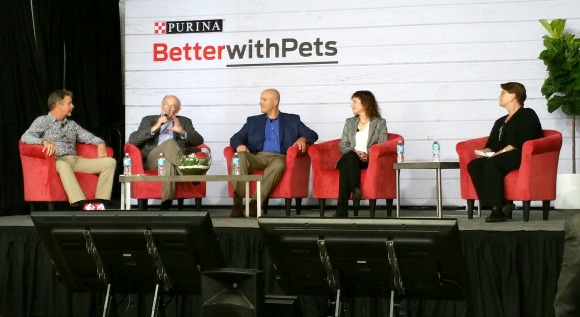


Shocked isn’t quite the right word but I was really impressed that Purina has some of the leading scientists in the country on their research team.
They have over 400 researchers worldwide that study things like what makes cats and dogs happy and healthy, the nutrition that pets need and the best ingredients to deliver them, athletic performance of dogs, and how pets and people interact together.
Dr. Arleigh Reynolds, Ph.D., D.V.M, the Director of Nestle Purina research facility in Salcha, Alaska, spoke about the little Alaskan village of Huslia, and his research there, at the Summit.
The village of Huslia uses sled dogs to teach cultural traditions and open kids up who were in trouble or withdrawn and has become a role model for the state of Alaska.
As part of the Better with Pets summit, Purina made a $50,000 donation to this program – the the Frank Attla Youth Program.
Dr. Reynolds also talked about the athletic ability of dogs and how nutrition impacts the performance in sled dogs.
He and his sled dog team have won 3 World Championships, 2 open North American championships, and hold 12 top three finishes in these races.
He found the VO2 Max – the ability to metabolize oxygen during physical exertion – of a dog on his racing team to be a full three times higher than the man he calls “the very best human athlete in the world” – Norwegian cross-country skier Bjorn Daehlie.
A behaviorist at Purina, Sandra Lyn, Ph. D., who has spent 11 years researching the feeding behavior of cats and dogs and what that behavior can tell their owners, sat on a panel with two other cat experts to discuss how millennials are changing the way people interact with cats.
It was clear to me that Purina employs some of the best veterinarians, researchers, and behaviorists in the world.
How Purina Helps Advance Pet Care
One of Purina’s mottos is Dream – Solve – Make a Difference and they strive to lead the industry when it comes to pet nutrition.
Did you know that Purina One was the first brand in grocery stores and mass channels to have real meat as the #1st ingredient?
But Purina is often bashed for being a “big evil corporation”.
However, it’s precisely because of their size that they are able to help advance what we know about keeping pets healthy, happy, and making the world a better place for them and their people.
They are one of a handful of companies in the world whose commitment to research, and improving the human-pet bond, is shaping the future of pet care.
Purina’s primary passion is pushing pet nutrition forward through rigorous scientific research and they can fund this because they are such a big corporation.
The research that Purina does benefits ALL dog food manufacturers
I thought of the research Purina does in pet nutrition in a different light.
Not only does it benefit them and their foods, but it benefits the smaller companies too.
Smaller, independent pet food companies typically can’t afford to hire top scientists and fund extensive research.
If it weren’t for big companies like Purina making discoveries in the pet nutrition field, these smaller companies might not have all of the information they need to formulate their own meals.
Nutrition is not all Purina is concerned about though.
They regularly forge partnerships in the pet welfare world and help to raise awareness about what pets truly need.
Purina exceeds $10,000,000 in annual investments across the company in pet welfare and the pet community.
Final Thoughts
Honestly, I didn’t know a lot about Purina before attending the Better with Pets Summits.
I knew they made some generic-quality, affordable dog foods, but also made some higher-quality dog foods that canine athletes and show-ring dogs eat.
But I learned that Purina is more than a dog food manufacturer. They aim to advance pet care in all respects.
Besides learning about some of the latest pet research at the Summit, I got the opportunity to meet some of the Purina employees face-to-face at the Summit.
It added a human element to the company for me.
It turns out, just like you and me, Purina employees:
- Think their pets are part of their family
- Bring their pets to work with them
- Spoil their pets with many treats and toys
- Dedicate their free time to animal causes
- Have more pictures of their dog or cat on their phone than they do of their spouse or children.
We also got to meet a lot of other pet celebrities and influencers at the Summit.
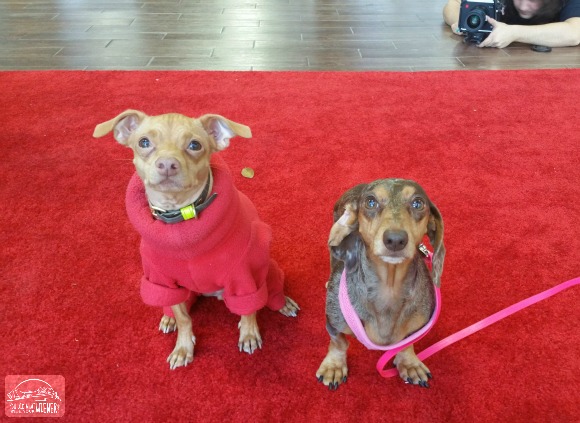


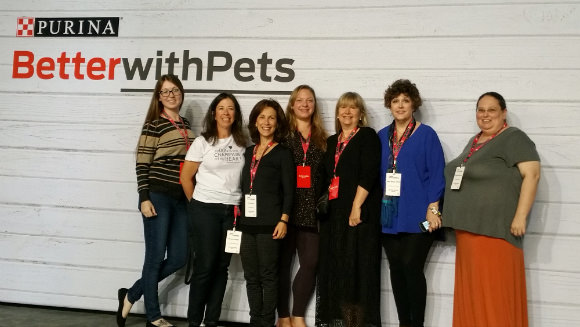


In the end, I thought that the Better with Pets summit was great and my perspective on Purina has changed.



Disclosure: Purina paid for our air travel and hotel to New York City to attend the Better with Pets Summit. Everything I said about the Better with Pets summit is true – It was amazing! – and Purina is not responsible for the contents of this article.



About the Author
Hi, I’m Jessica. I’ve been studying the Dachshund breed since 2007, owned 3 of my own, and shared in the lives of thousands of others through their owner’s stories. When I’m not sharing what I know on this blog, you can find me hiking, camping, and traveling with my adventurous wiener dogs.

Fascinating research. Even though most of us feel like there is communication between us and our dogs, it does have some limitations. I know many times I have thought that I’d love to know exactly what my dogs are thinking and feeling. It is great to see science helping us learn more about what causes them stress.
I’m glad you had this experience and then shared it with us! I feed Purina Pro Plan and am very pleased with it. I’ve talked at length with Purina representatives at dog shows and am always amazed that they don’t try to convince me that their food is the best (like many reps do). They simply share their knowledge about good nutrition and their foods.